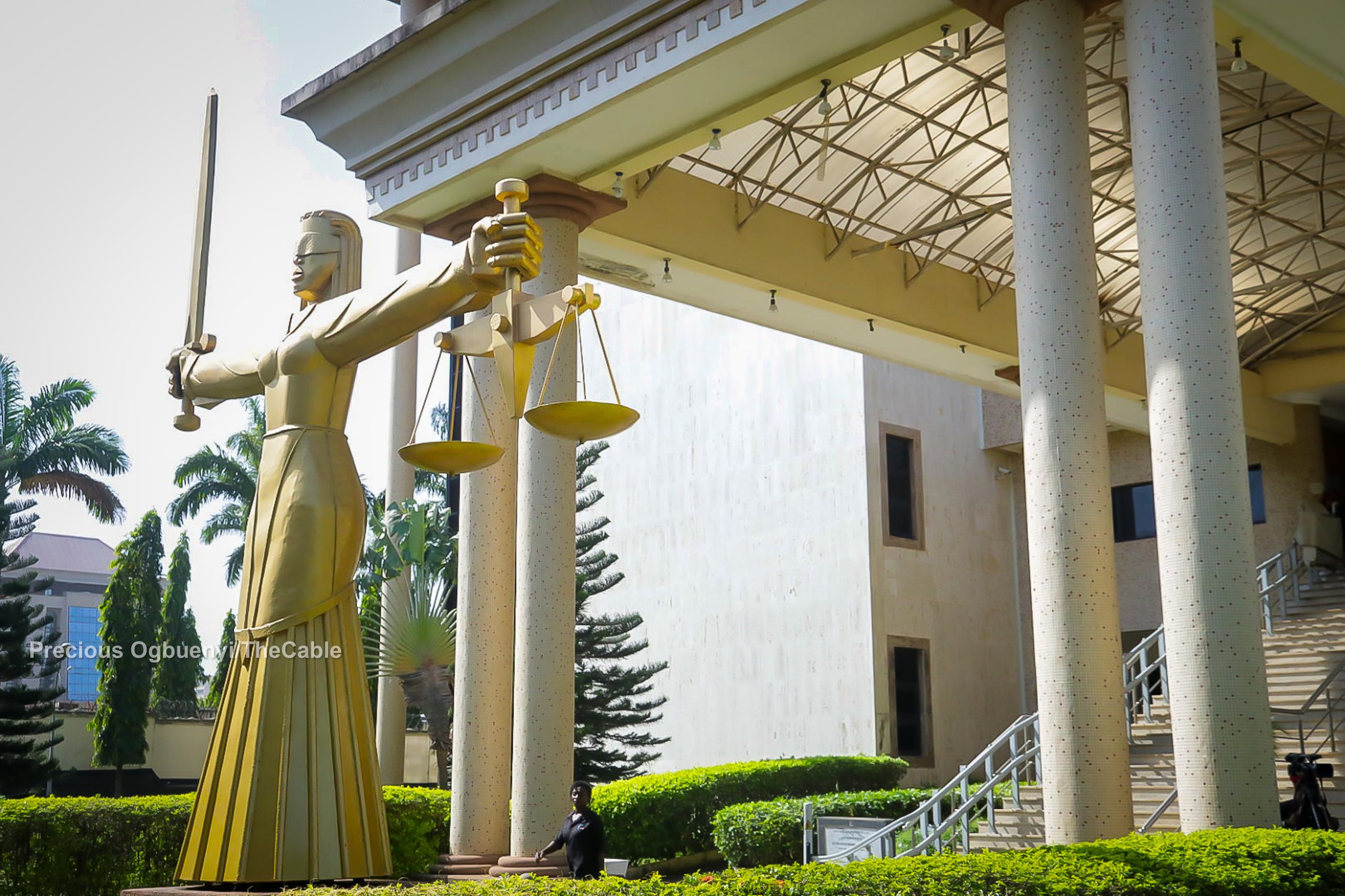Pilgrims from Nigeria, like their counterparts from other countries, are prepared for the sweltering summer temperatures in Saudi Arabia as hajj officially commences on today.
Some of the pilgrims who spoke to our correspondent in the Holy City of Makkah, on Tuesday, said they have bought umbrellas and flasks for storage of cold water in anticipation of the Day of Arafat on Thursday.
The Saudi National Centre for Meteorology predicts daytime temperatures ranging between 40°C and 47°C (104°F to 117°F), with humidity levels fluctuating between 15% and 60% as one of the world’s largest annual religious gatherings, bringing together devotees from around the globe, officially commences.
Sokoto, the hottest state in Nigeria on Tuesday was 30 degrees Celsius, showing a remarkable difference with the situation in Makkah.
Some of those who spoke said they were preparing for the intense heat forecasted during the Hajj pilgrimage.
Haruna Abdullahi, a pilgrim from Kano State, shared his preparations: “I bought an umbrella and a water bottle ahead of Arafat because of the heat. We were advised to stay hydrated and protect ourselves from the sun.”
Similarly, Malama Maryam from Sokoto expressed her concerns: “The heat is intense, and I didn’t want to take any chances. Having an umbrella and water bottle is essential for our well-being.”
But Musa Ibrahim from Bauchi said he was not panicking. “The Saudi Authorities are doing a lot… When you look at it, most of the places have air conditioners: the rooms, buses and places of worship. Where someone will have problem is when you stay in the sun,” he said.
Saudi readies for ‘worst case scenario’
Near a tent city outside Mecca, Saudi hospital staff are preparing for a flood of heat-related cases.
The Mina Emergency Hospital is one of 15 such facilities operating just a few weeks a year around the annual pilgrimage to Islam’s holiest sites, which in 2024 saw more than 1,300 people die in the desert heat.
Saudi authorities hope to head off a fatal repeat of last year’s pilgrimage, when temperatures reached 51.8 degrees Celsius (125 Fahrenheit).
So far, authorities have recorded 44 cases of heat exhaustion.
Abdullah Asiri, Saudi Arabia’s deputy minister for population health, told AFP at the Mina hospital that “the focus is on heat-related conditions because the hajj coincides with extreme heat”.
Brimming with staff but no patients just yet, the hospital is part of the kingdom’s efforts to prepare for “the worst case scenario” after pilgrims descend on Mina, Asiri said.
Defying the scorching heat, pilgrims have already started to flock to Mecca.
As of Sunday, more than 1.4 million pilgrims had arrived in Saudi Arabia for the multi-day pilgrimage, according to officials.
Mecca’s Grand Mosque is serviced by the largest cooling system in the world, according to Saudi state television, with enormous fans and cooled pavements dotting the massive complex.
But outside, hiding from the heat can prove challenging.
Meanwhile, Saudi authorities have asked pilgrims performing the hajj to remain in their tents for several hours during the high point of this week’s pilgrimage.
According to a report in Saudi media, Hajj Minister Tawfiq al-Rabiah has requested that pilgrims refrain from leaving their tents between 10:00am and 4:00pm on Thursday.
The “Day of Arafat” traditionally marks the high point of the hajj, when pilgrims scale Mount Arafat on the outskirts of Mecca.
There, pilgrims assemble on the 70-metre (230-foot) high hill and its surrounding plain for hours of prayer and Koran recital, staying there until the evening.
There is little to no shade on Mount Arafat, leaving pilgrims directly exposed to the harsh desert sun for hours.
“We warn against climbing mountains or high places on the Day of Arafat, as it causes extreme physical exertion and increases the risk of heat exhaustion,” the health ministry said in a separate statement published by Saudi media.
Officials have beefed up heat mitigation measures hoping to avoid a repeat of last year’s hajj, which saw 1,301 pilgrims die as temperatures reached 51.8 degrees Celsius (125.2 Fahrenheit).
This year, authorities have mobilised more than 40 government agencies and 250,000 officials, doubling their efforts against heat-related illness following the lethal heatwave of 2024.
Shaded areas have been expanded by 50,000 square metres (12 acres), thousands more medics will be on standby, and more than 400 cooling units will be deployed, the hajj minister told AFP last week.
Some pilgrims wear caps or carry umbrellas, but others walk on foot without any protection from the sun, like Palestinian Rabah Mansour, 70, who said that after a lifetime of working outside as a farmer, “heat doesn’t bother me”.
“I have been working in the fields since I was a child,” he said, as sweat trickled down his face.
While many pilgrims may be overcome with religious fervour, Asiri warned devotees against unnecessarily exposing themselves to harsh conditions.
Badr Shreiteh, another Palestinian pilgrim, told AFP that he believed such hardships on the hajj trail would increase the blessings he reaps.
“As you can see, we’re dripping with sweat,” he said, adding: “The more hardship we endure, the more reward we gain.”
According to Asiri, of the health ministry, a total of 50,000 healthcare workers and administrative staff have been mobilised for the hajj, far exceeding previous years’ numbers.
More than 700 hospital beds are ready, equipped with fans to treat severe cases of heat illnesses.
“Capacity this year has been expanded by more than 60 per cent compared to last year,” Asiri said, expecting greater numbers of patients.
“That’s why we are doing all of these measures,” he said.
Last year, medical staff treated 2,764 pilgrims for heat exhaustion and other heat-related conditions, according to the health ministry.
Cooled walkways
To prevent people from needing hospitalisation in the first place, 71 emergency medical points have been set up around Mecca’s holy sites with a focus on “treating patients on the ground before their case deteriorates”, said Asiri.
On the second day of hajj, pilgrims will head to Mount Arafat, climbing it and reciting prayers for the whole day.
Asiri said pilgrims can stay in the shade.
“Most of the heat-related illnesses that happen in Arafat are because people think that they must be under the sun,” he said.
“You don’t have to be outside your tent during Arafat. You don’t have to climb the mountain,” he added, citing no religious obligation to do so, “and it’s very risky from a health point of view”.
Hajj Minister Tawfiq al-Rabiah told AFP that thousands of misting fans and more than 400 water cooling units have been deployed.
Authorities built cooled walkways, including a newly completed four-kilometre (2.5-mile) pathway leading to Arafat.
Last year’s hajj deaths were a high-profile example of the havoc wrought by heat in 2024, which the Copernicus Climate Change Service said was the hottest ever recorded.
Abdul Majid Ati, from the Philippines, said there “extreme heat, but there are also times that we are inside the (Grand Mosque) – it’s extreme cold because of the tiles and of the aircon”.
“We take this as a challenge and a test of our moral character.”
The Arafat is the climax of Hajj, and every pilgrim is expected to be there.












